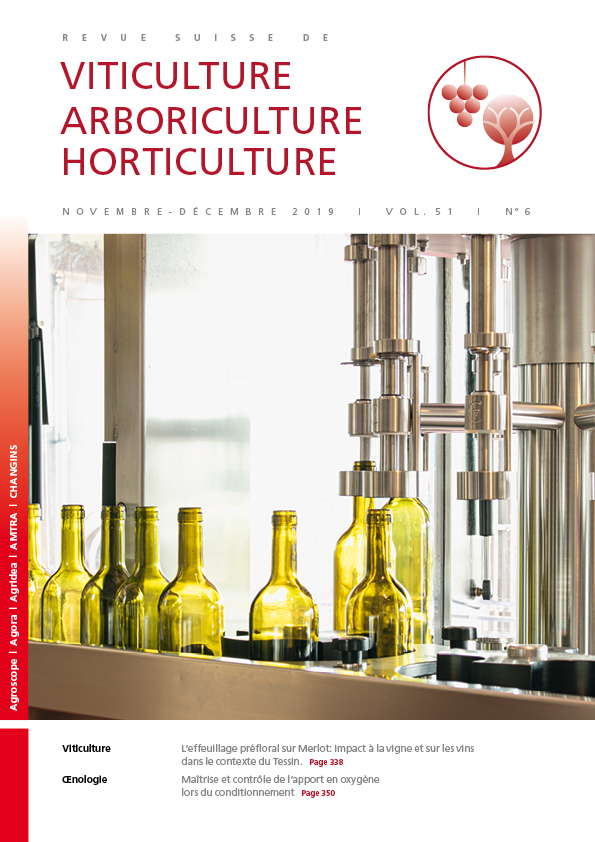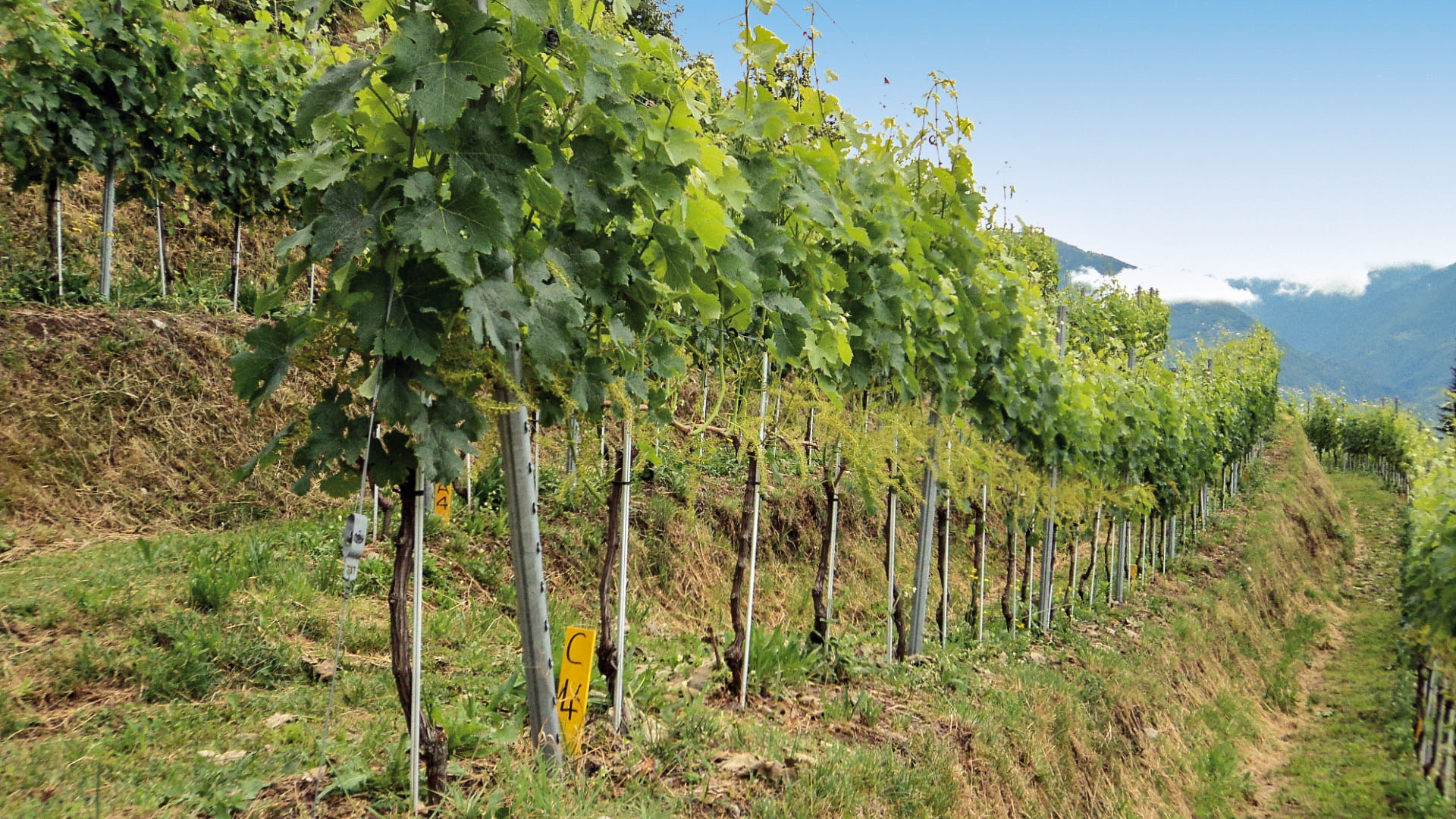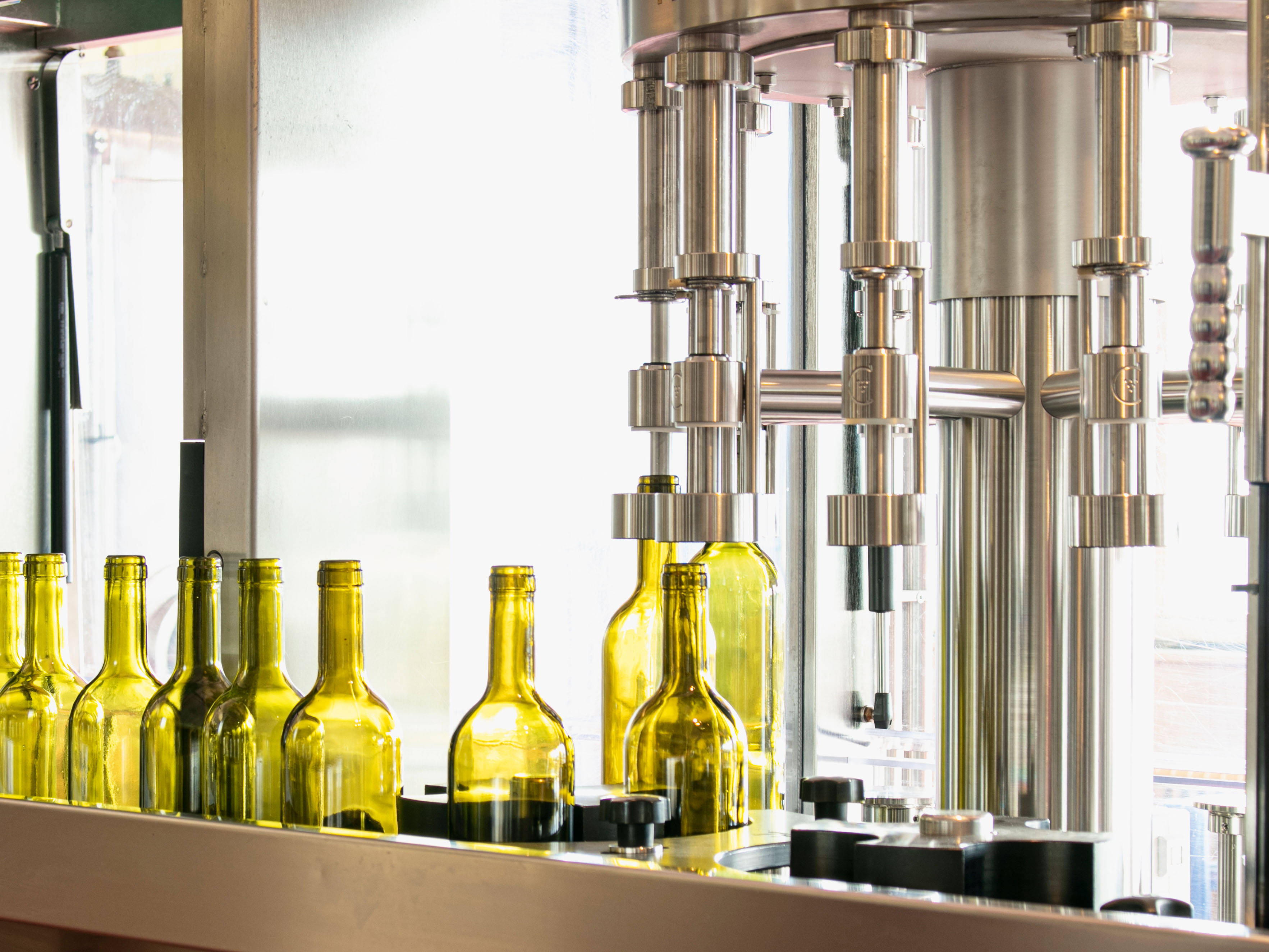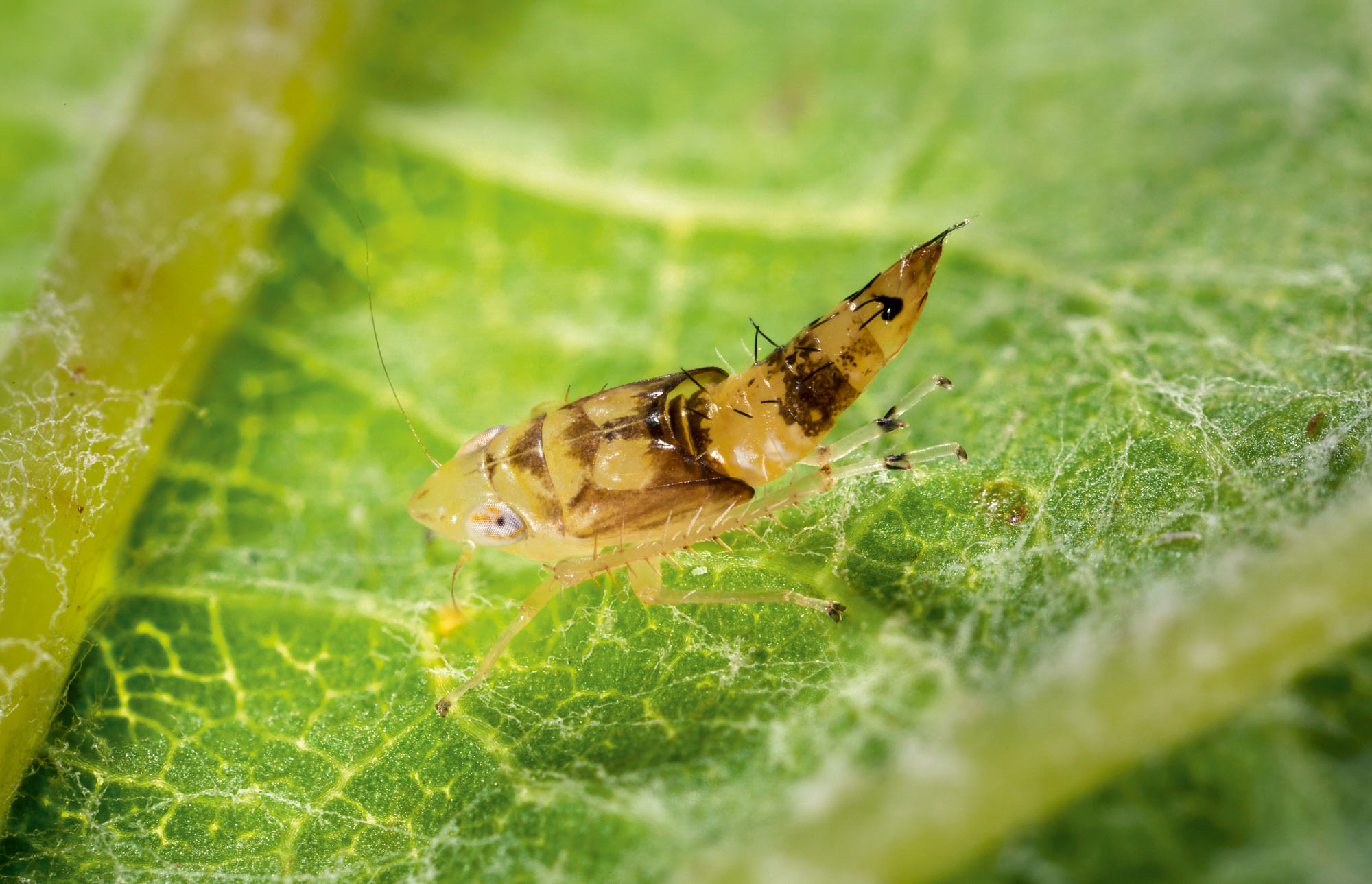
Issue 6 - November - December 2019

Abstract in open access
Une étude a été réalisée sur le cépage Merlot pour évaluer l’impact de la précocité de l’effeuillage de la zone des grappes
dans le contexte du Tessin. Une attention particulière a été portée aux composantes du rendement, à la composition des raisins
et au profil sensoriel des vins. Pendant six ans, des vignes de Merlot ont été effeuillées de façon intensive dans la zone des grappes à différents stades phénologiques (fermeture de grappe, floraison, boutons séparés). Les résultats ont été influencés par les conditions climatiques des millésimes. Globalement, dans le cas d’un effeuillage préfloral, le potentiel de rendement a subi une baisse moyenne de 27 ± 8%, contre seulement 16 ± 12% au moment de la floraison. Les moûts de la variante non effeuillée étaient régulièrement plus acides par rapport aux variantes effeuillées (+0,3 g/L d’acidité totale) et les vins correspondants ressortaient systématiquement moins concentrés en anthocyanes et moins intenses en couleur. Une faible baisse de fertilité des bourgeons a été observée lors d’un effeuillage préfloral sur le long terme, sans affecter la vigueur ni la pérennité de la vigne. L’effeuillage précoce représente une technique prophylactique efficace pour lutter contre les maladies
fongiques; il limite les rendements excessifs et réduit le travail de vendanges en vert; il améliore légèrement la composition des vins de Merlot.
Keywords: leaf removal, yield regulation, Botrytis, wine composition.
E-Mail: thibaut.verdenal@agroscope.admin.ch
Adress: Agroscope, 1009 Pully

Abstract in open access
Oxygen management during winemaking is a major challenge to guarantee a quality wine in terms of both colour and aromatic qualities, especially where the winemaker wishes to limit the SO2 content. The classic stages of winemaking (pumping, stabilising, bottling, etc.) are all phases during which oxygen can be added
to the wine, so these stages must be carried out carefully. The bottling stage is especially prone to these problems of uncontrolled oxygen addition, which is why various inerting
systems have been developed. The objective of this study is to demonstrate the need to adapt the settings of these different inerting devices at packaging line level in order to guarantee optimal oxygen management at bottling.
Keywords: oxygen control, wine bottling, dissolved oxygen, headspace oxygen,Total Package Oxygen.
E-Mail: marie.blackford@agroscope.admin.ch
Adress: Agroscope, 1260 Changins/Nyon

Abstract in open access
The reproductive behavior of Scaphoideus titanus
females was studied in the period 2012 and 2013 through in-field captures and in cage rearing at a constant temperature of 23° C. The field captures showed an average content in the abdomen varying between 5,9 and 8,3 eggs/female. Approximately 80% of females without eggs were concentrated in the first three weeks after adults emerging. In the cage rearing, the average longevity of mated females is 60.8 days with an average total egg laying of 37,6 eggs/female. Longevity
can be divided into four phases: from emerging
to mating, from mating to the beginning of oviposition, from beginning to the end of oviposition and from the end of oviposition to death. These results confirm the need to quantify better these fundamental parameters for the development of a density model for S. titanus.
Keywords: egg, oviposition, dynamic, mating, sticky trap, beating tray
E-Mail: mauro.jermini@agroscope.admin.ch
Adress: Agroscope, 6593 Cadenazzo
Abstract in open access
Pour répondre à sa mission de développer
et d’enseigner une viticulture durable, la Haute Ecole
de Changins conduit des recherches sur la flore
viticole et sur les alternatives aux herbicides depuis
plus de dix ans.
Keywords:
E-Mail: matteo.mota@changins.ch
Adress: CHANGINS Haute école de viticulture et oenologie

 Download of full issue
Download of full issue
 Download article
Download article Download article
Download article